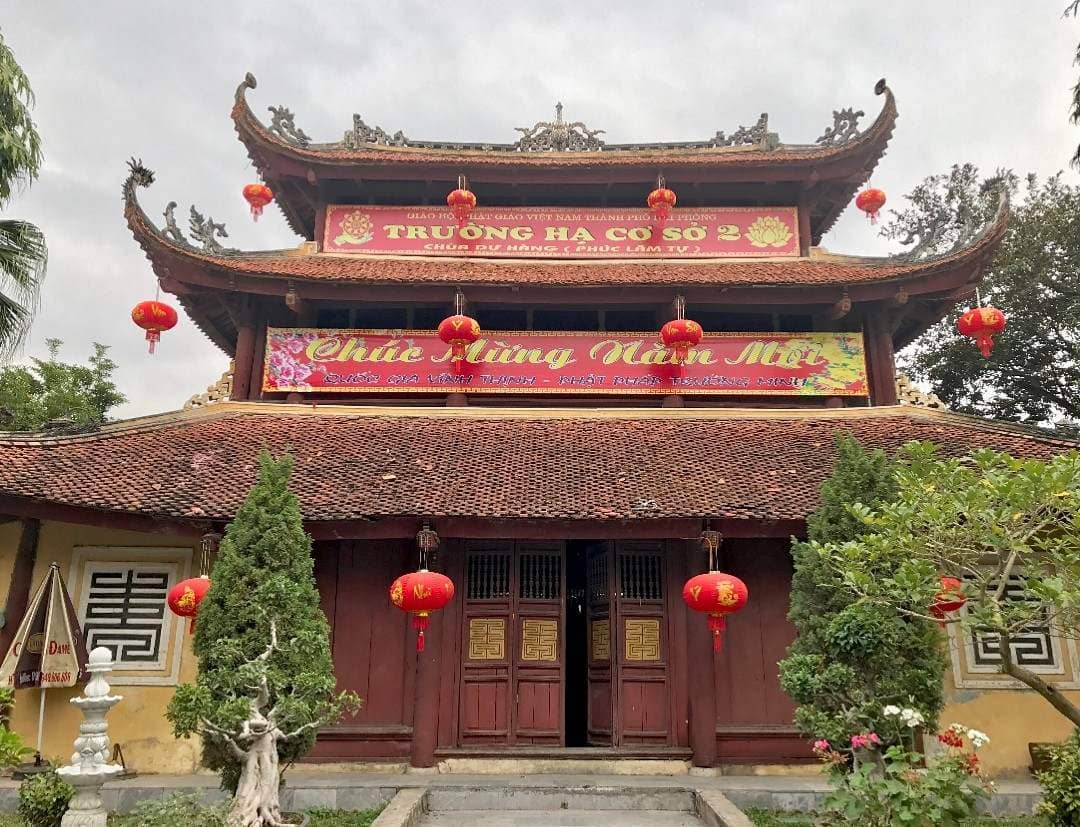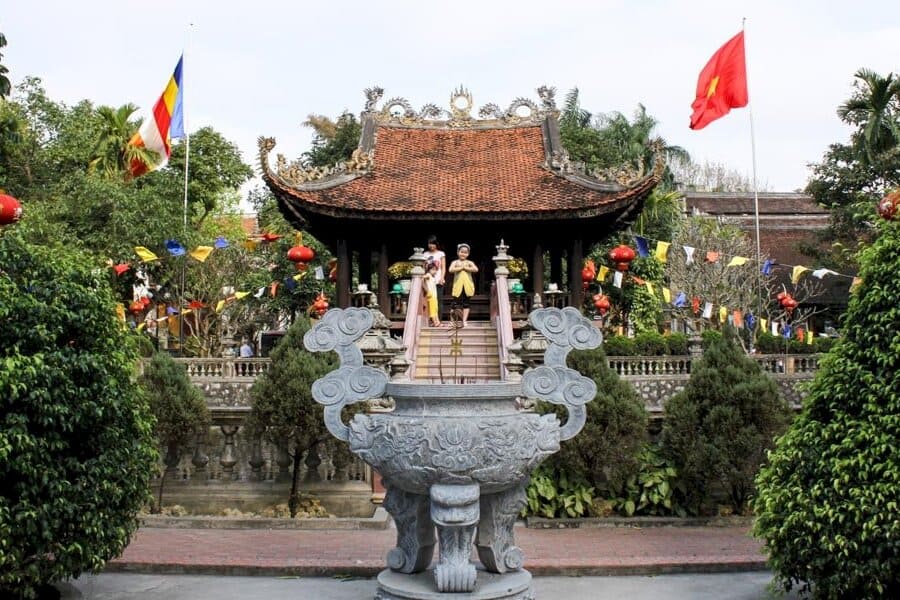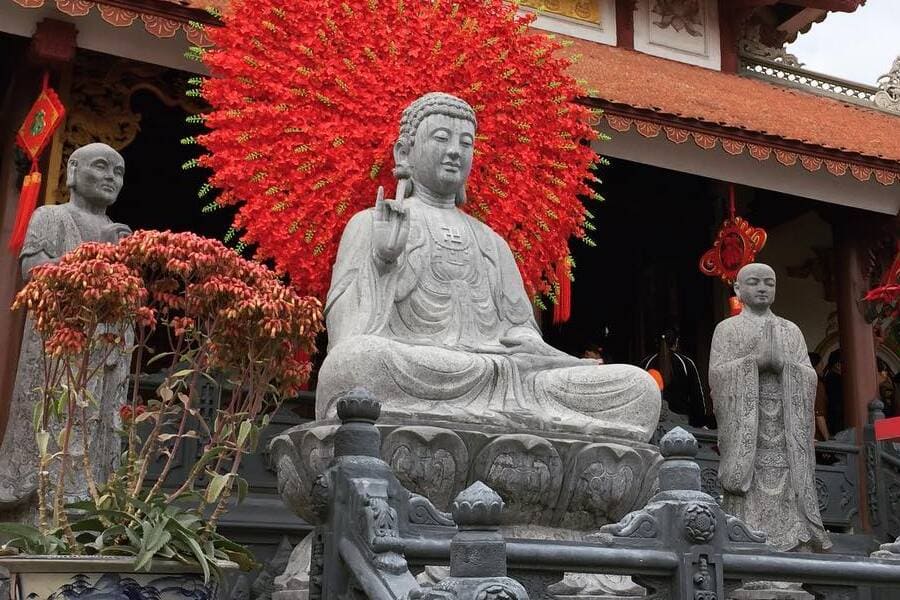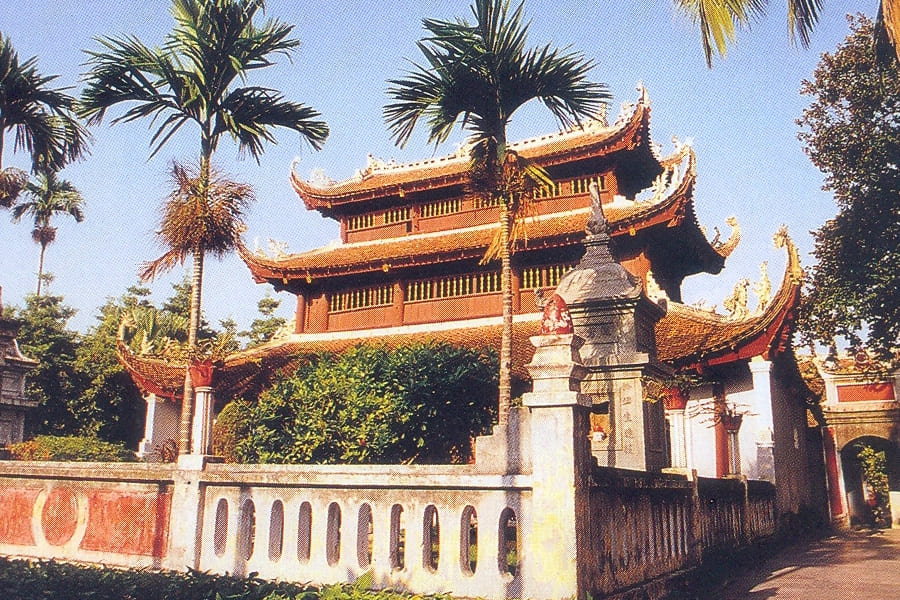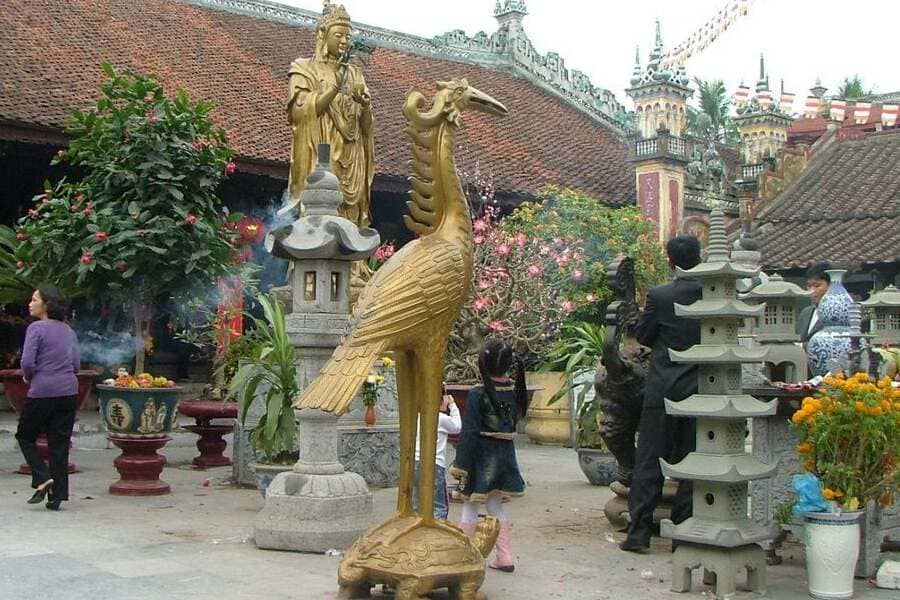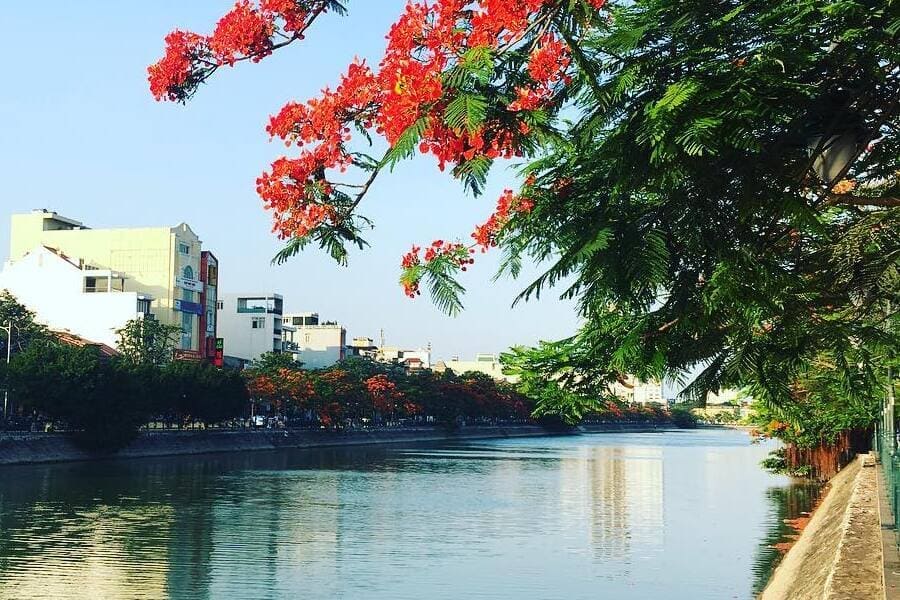Located in Hai Phong, Du Hang Pagoda stands as a testament to Vietnam’s rich cultural and spiritual heritage. This ancient pagoda, nestled amidst the bustling streets of Le Chan district, offers visitors a tranquil escape and a glimpse into the country’s profound Buddhist traditions. As a notable destination on Hai Phong shore excursions, with its historical significance dating back centuries, Du Hang Pagoda attracts pilgrims and tourists alike, seeking to explore its serene atmosphere and architectural beauty.
An Overview of Du Hang Pagoda
The address of Du Hang Pagoda
Du Hang Pagoda is located at 121 Du Hang Street, Le Chan District, Hai Phong City
How to get there?
Du Hang Pagoda is situated in one of the bustling streets of this port city. Due to its central location, reaching the pagoda is quite convenient. Visitors can easily choose various transportation options such as taxis, buses, motorbike taxis, or rental motorbikes to get there.
To get to Du Hang Pagoda in Hai Phong from Hanoi, you have a few transportation options:
By Bus
Take a bus from Hanoi to Hai Phong. Several bus companies operate routes between the two cities, and you can find buses departing from various stations in Hanoi such as My Dinh, Giap Bat, or Gia Lam.
Upon arrival at Hai Phong bus station (like Niem Nghia or Ben xe Cau Rao), you can then take a taxi or a local bus to Du Hang Pagoda. Make sure to confirm the route and bus stop with the locals.
By Train
Take a train from Hanoi to Hai Phong. Trains run regularly from Hanoi Railway Station (Hanoi Station) to Hai Phong Railway Station.
From Hai Phong Railway Station, you can take a taxi or local transportation to Du Hang Pagoda.
By Car
If you prefer driving, you can rent a car and drive from Hanoi to Hai Phong. The journey takes approximately 2 to 2.5 hours depending on traffic and the route you take (via Highway 5B or other routes).
The Origin and History of Du Hang Pagoda
The history of Du Hang Pagoda in Hai Phong dates back to the Pre-Le dynasty (980 – 1009). During the reign of King Le Đai Hanh, a founding monk arrived here to preach and enlighten Buddhist teachings. In 1672, during the reign of King Le Gia Tong, Monk Nguyen Đinh Sach funded the purchase of land for expansion, including building monastic quarters, ancestral halls, and a bell tower. The pagoda underwent further renovations in 1899 under King Thanh Thai’s reign.
In 1917, Du Hang Pagoda in Hai Phong expanded to include a statue garden, library, and pagoda garden, alongside renovations to various sections. Despite historical ups and downs, this ancient temple has been diligently restored over generations by monks, nuns, and devotees from all walks of life, enhancing its beauty and grandeur.
The special Architecture of Du Hang Pagoda
Despite its millennia-old age, Du Hang Pagoda retains almost entirely its ancient appearance and architectural style. This ancient temple is designed in the ancient architecture style, known as the Dinh type. The seven-room Buddhist hall is centrally located, with a tiled roof designed in the hanging bell shape.
Inside, it is adorned with many couplets and gold-leafed horizontal lacquered boards. The carved doorways are intricately decorated with motifs of dragons amidst clouds, five blessings, and plum blossoms. In front of the Buddhist hall is the Three Entrances, where the five-room bell tower stands with its three-tiered curved roof, displaying a majestic presence. Additionally, the pagoda includes ancestral houses, a Mother Goddess temple, a Founder’s Hall, a guesthouse for male monks, and living quarters for monks.
One of the highlights that attracts tourists to Du Hang Pagoda in Hai Phong is its unique architectural structures. Among them are:
- Tower garden: The tower garden consists of 11 small stone towers housing the relics of Zen masters from the Truc Lam Yen Tu Zen sect and abbots who passed away at the pagoda.
- Bell tower: The pagoda’s bell tower is built in a three-tiered structure adorned with intricate phoenix motifs. The words “Phuc Lam Tu” are prominently carved on the bell tower.
- Founder’s Hall and Upper Residence area: The Founder’s Hall at Du Hang Pagoda is designed with five spacious sections, surrounded by the Rear Hall, Front Hall, and Upper Residence area. The Upper Residence area primarily uses wood as its main material, with ancient carvings on the walls creating a sense of solemnity and warmth.
Du Hang Pagoda Tour Guide
The best time to visit Du Hang Pagoda
The best time to visit Du Hang Pagoda in Hai Phong is during the spring (from February to April) and autumn (from September to November) months. During these seasons, the weather in northern Vietnam, including Hai Phong, is generally pleasant with mild temperatures and lower humidity. This makes exploring the pagoda and its surroundings more comfortable and enjoyable. Additionally, visiting during these times allows you to avoid the peak of the rainy season (June to August), which can sometimes bring heavy rainfall and disrupt outdoor activities.
Visit tips to Du Hang Pagoda
Here are some tips for tourists visiting Du Hang Pagoda in Hai Phong:
- Respectful Attire: Dress modestly and respectfully as Du Hang Pagoda is a religious site. Avoid wearing revealing clothing or shorts.
- Shoes Off: Remove your shoes before entering the pagoda buildings. It’s a customary practice to keep the floors clean and to show respect.
- Quiet Reflection: Maintain a quiet and respectful demeanor while inside the pagoda to not disturb worshippers or monks.
- Explore Surroundings: Take time to explore the beautiful garden and architecture around the pagoda. Enjoy the tranquil atmosphere and learn about its historical significance.
- Respect Local Customs: Be mindful of local customs and traditions, and follow any guidelines provided by staff or signs at the pagoda.
Other destinations for tourists in Hai Phong near Du Hang Pagoda
Here are some other destinations near Du Hang Pagoda in Hai Phong that tourists might find interesting to visit:
- Hai Phong Opera House: Located nearby, the Hai Phong Opera House is a historic French colonial building that hosts cultural performances and events. It’s a great place to explore for architecture enthusiasts.
- Hai Phong Museum: Just a short distance away, Hai Phong Museum showcases the history and culture of Hai Phong through various exhibits, artifacts, and displays. It’s a good place to learn about the city’s rich heritage.
- Tam Bac Lake: This picturesque lake is not far from Du Hang Pagoda and offers scenic views, especially during sunset. Visitors can take a leisurely walk around the lake or enjoy a boat ride.
- City Centre: Hai Phong’s city center itself offers vibrant markets, shops, and restaurants where tourists can experience local cuisine and shop for souvenirs.
With its ancient architecture, tranquil surroundings, and revered relics like the Garden of Towers and Bell Pavilion, Du Hang Pagoda offers visitors a profound glimpse into Buddhist traditions and architectural marvels. As a noteworthy stop on Vietnam shore excursions, whether you seek spiritual solace, cultural exploration, or simply admire historical craftsmanship, it promises a captivating experience for all who visit.

